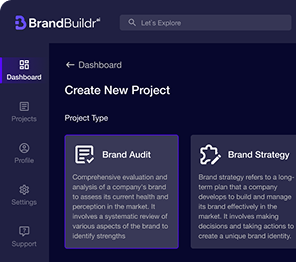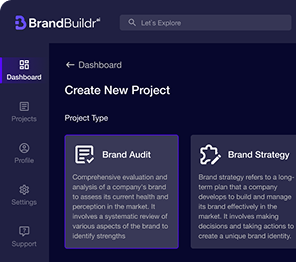The foundation of exceptional software lies in robust quality assurance services that ensure products meet stringent quality standards before reaching end users. Quality assurance represents far more than simply testing for bugs; it encompasses a comprehensive approach to building quality into every phase of the software development lifecycle.
Modern software development environments demand sophisticated quality assurance methodologies that can keep pace with accelerated development cycles while maintaining the highest standards of reliability, performance, and user satisfaction. The increasing complexity of software systems, coupled with the need for rapid deployment, has transformed quality assurance from a final checkpoint into an integral component of the entire development process. Organizations that successfully implement comprehensive quality assurance frameworks consistently deliver superior products, reduce development costs, and maintain competitive advantages in their respective markets.

What is Quality Assurance in Software Development?
Quality assurance in software development is a systematic approach that ensures software products meet predetermined quality standards and requirements throughout the development lifecycle. Unlike quality control, which focuses on identifying defects in finished products, quality assurance is process-oriented and emphasizes preventing defects from occurring in the first place. The International Software Testing Qualifications Board (ISTQB) defines quality assurance as "activities focused on providing confidence that quality requirements will be fulfilled".
Quality assurance in software development encompasses all software engineering processes, methods, and work products to ensure compliance with defined standards. It involves establishing organization-wide policies, procedures, and standards that guide development teams in creating high-quality software consistently. This comprehensive approach includes:
- Requirements engineering
- Software design
- Coding standards
- Code reviews
- Source code control
- Software configuration management
- Testing protocols
- Release management
- Software integration processes
The Role of QA in the Software Development Lifecycle
The QA process functions as a continuous thread woven throughout the entire software development lifecycle, rather than being confined to a specific phase. Quality assurance activities begin during the requirements gathering phase and continue through design, development, testing, deployment, and maintenance. This integrated approach ensures that quality considerations influence every decision and activity throughout the project.
QA involves establishing quality checkpoints at each development phase, where teams evaluate progress against predetermined quality criteria. These checkpoints serve as gates that prevent inferior work products from advancing to subsequent phases. The QA team participates in:
.png)
- Requirement analysis
- Design reviews
- Code inspections
- Testing activities
Lifecycle integration enables early detection and resolution of issues, significantly reducing the cost and complexity of addressing problems later. By establishing quality standards from the project's inception, teams can make informed decisions that support both immediate development needs and long-term product quality objectives.
Why Quality Assurance Is Crucial for Successful Software Projects
The benefits of quality assurance in software extend far beyond simple defect detection to encompass strategic business advantages that directly impact organizational success. Companies that neglect quality assurance face substantial financial consequences, with poor software quality in the United States alone estimated at $2.41 trillion annually.
Quality assurance benefits include:
- Significant cost reduction through early defect detection and resolution
- Enhanced productivity by streamlining development processes
- Reduced rework, clearer communication, and more predictable outcomes
- Faster development cycles and better resource allocation
This proactive approach results in improved user satisfaction and reduced support and maintenance costs.
Key Techniques in Quality Assurance for Software Development
Key Techniques in Quality Assurance for Software Development
Software testing techniques form the cornerstone of effective quality assurance, providing systematic approaches to validating software functionality, performance, and reliability. Modern quality assurance employs diverse testing methodologies designed to address different aspects of software quality, from basic functionality verification to complex performance analysis under various operating conditions.
Manual Testing: The Human Element in QA
Manual testing in software development involves human testers executing test cases step-by-step without automation tools, providing crucial insights that automated processes cannot replicate. This approach enables testers to evaluate user experience, interface usability, and subjective quality factors that require human judgment and intuition. Manual testing excels in exploratory scenarios where testers can adapt their approach based on observed behavior and discover unexpected issues.
Manual testing in software development proves particularly valuable for usability testing, where human testers can assess whether applications meet user expectations and provide intuitive interfaces. This testing approach allows for immediate feedback on:
- User interface design
- Navigation flow
- Overall user experience quality
Manual testers can identify inconsistencies, confusing workflows, and accessibility issues that automated tools might overlook.
The human element in manual testing provides flexibility and adaptability that automated systems cannot match. Experienced testers can modify their testing approach in real-time based on observations, explore edge cases that weren't initially considered, and provide valuable feedback on software design and functionality. This adaptability makes manual testing essential for new feature validation and user acceptance testing.
Automated Testing: Speeding Up the QA Process
Automated testing in software development leverages specialized tools and scripts to execute test cases automatically, significantly improving testing efficiency and consistency. This approach excels at:
- Handling repetitive tasks
- Regression testing
- Large-scale test execution that would be impractical to perform manually
Automated testing provides rapid feedback to development teams, enabling faster identification and resolution of issues.
Automated testing in software development offers substantial advantages in terms of speed, accuracy, and scalability. Automated tests can execute much faster than manual tests and can run in parallel across multiple environments simultaneously. This capability enables comprehensive testing coverage within compressed timeframes, supporting agile development practices and continuous integration workflows.
The consistency of automated testing eliminates human error and ensures that tests are performed identically each time they execute. This reliability makes automated testing ideal for regression testing, where teams need to verify that existing functionality remains intact after code changes. Automated test suites can run continuously, providing immediate notification when new code introduces defects.
Integration and Regression Testing: Ensuring Consistency
Software testing techniques for integration and regression testing focus on validating system consistency and stability as software evolves. Integration testing examines the communication and data flow between different software modules to ensure they work together seamlessly. This testing approach identifies:
- Interface problems
- Data transformation issues
- Compatibility conflicts
Regression testing involves re-executing existing test cases after software modifications to ensure that new changes haven't negatively impacted previously working functionality. This testing technique is crucial for maintaining software stability throughout the development lifecycle, particularly in environments where code changes occur frequently. Regression testing helps prevent the introduction of new defects while adding features or fixing existing issues.
Software testing techniques for integration testing include:
- Big bang integration (combining all modules simultaneously)
- Incremental integration (integrating modules one at a time)
Each approach offers different advantages depending on project requirements, system complexity, and risk tolerance. Effective integration testing strategies consider module dependencies, interface specifications, and data flow requirements to ensure comprehensive validation.

QA Best Practices for Ensuring High-Quality Software
QA best practices encompass proven methodologies and approaches that consistently deliver superior software quality while optimizing development efficiency. These practices emphasize early quality integration, comprehensive testing coverage, and collaborative development approaches that make quality everyone's responsibility rather than solely the QA team's concern.
Early Testing: Shifting Left to Detect Issues Early
QA best practices strongly emphasize shift-left testing, which involves moving testing activities earlier in the software development lifecycle. This approach enables teams to identify and resolve issues when they are less expensive and complex to fix. Early testing includes:
%20(1).png)
- Requirements validation
- Design reviews
- Code analysis
The shift-left approach reduces development costs by catching issues before they compound or create additional problems. Early bug detection ensures higher code quality and results in more reliable, stable software products. This proactive approach leads to increased customer satisfaction and reduced support and maintenance costs.
QA best practices for early testing include conducting thorough specification reviews to identify potential defects early in the process. Teams should evaluate epics and user stories to establish clear acceptance criteria and validate the foundation for future test cases. Design validation compares specifications against design mockups to identify discrepancies before development begins.
Creating Test Cases That Cover Real-World Scenarios
Software testing techniques for creating comprehensive test cases involve developing scenarios that accurately reflect real-world usage patterns and edge cases. Effective test case design employs various techniques, including:
- Boundary value analysis
- Equivalence partitioning
- Decision tables
Boundary value analysis focuses on testing input boundaries where defects commonly occur. For example, when testing an e-commerce quantity field that accepts values from 1 to 100, test cases should include boundary values like 1, 100, and values just outside these limits. This technique efficiently identifies common input validation errors.
Equivalence partitioning groups similar inputs into classes and tests representative values from each class. For a username field requiring 5-15 characters, test cases would cover valid lengths, too short inputs, and too long inputs. This approach reduces the number of test cases while maintaining comprehensive coverage.
Decision tables prove valuable for complex business rules with multiple conditions and outcomes. For systems like ATM withdrawal processing with various account states, transaction types, and balance conditions, decision tables systematically map all possible combinations to ensure complete scenario coverage.
Essential Tools for Quality Assurance in Software Development
Software quality assurance tools provide the technological foundation that enables efficient, comprehensive, and scalable testing practices. These tools range from test automation frameworks and bug tracking systems to performance monitoring solutions and continuous integration platforms that support modern development workflows.
Test Automation Tools: Streamlining Repetitive Tasks
Software quality assurance tools for test automation significantly reduce the time and effort required for repetitive testing tasks while improving accuracy and consistency. Popular automation frameworks like Selenium provide:
- Cross-platform compatibility for web application testing
- Support for multiple programming languages and browsers
These tools enable teams to create comprehensive test suites that can execute automatically as part of continuous integration pipelines.
Selenium stands out as the leading open-source framework for web browser automation, offering flexibility and strong community support. It supports various programming languages including Java, Python, C#, and JavaScript, making it accessible to development teams with different technical backgrounds. Selenium's cross-browser testing capabilities ensure that applications function consistently across different web browsers and operating systems.
Software quality assurance tools like Cypress offer modern alternatives to traditional automation frameworks, providing improved developer experience and faster test execution. Cypress includes:
- Built-in debugging capabilities
- Real-time browser reloading
- Automatic waiting for elements
These features reduce the complexity of test script maintenance and make automated testing more accessible to development teams.
Bug Tracking and Issue Management Tools
Software quality assurance tools for issue management provide centralized platforms for:
- Tracking defects
- Managing testing workflows
- Facilitating collaboration between development and QA teams
JIRA represents one of the most widely adopted issue tracking systems, offering comprehensive project management features alongside bug tracking capabilities.
JIRA's integration capabilities with testing tools like Selenium create powerful workflows for automated defect reporting. When automated tests detect failures, they can automatically create JIRA issues with detailed information about test conditions, failure symptoms, and relevant screenshots or logs. This integration eliminates manual effort in defect reporting and ensures consistent issue documentation.
Software quality assurance tools for issue management also provide dashboard views that offer real-time visibility into test execution status, defect trends, and quality metrics. These dashboards enable project stakeholders to monitor testing progress, identify bottlenecks, and make informed decisions about release readiness. The centralized nature of these tools improves communication and coordination across distributed development teams.

The Role of Continuous Testing in Modern Software Development
Continuous testing in software development represents a paradigm shift from traditional testing approaches to integrated, automated testing that provides immediate feedback throughout the development pipeline. This approach aligns with DevOps principles and agile methodologies to ensure that software remains in a deployable state at all times.
Continuous Integration and Continuous Testing: A Unified Approach
Continuous testing in software development integrates seamlessly with continuous integration and continuous deployment (CI/CD) pipelines to automate quality validation at every stage of the development process. This integration ensures that:
- Every code change triggers appropriate tests
- Immediate feedback is provided on the impact of modifications
The goal is to maintain software in a consistently deployable state by detecting and addressing issues as they occur.
The unified approach of continuous testing and CI/CD eliminates traditional bottlenecks where testing occurs as a separate phase after development completion. Instead, testing becomes an integral part of the development workflow, with automated tests executing whenever code is committed to version control systems. This immediate feedback enables developers to address issues while the code changes are still fresh in their minds.
Continuous testing in software development employs the shift-left testing principle, moving testing activities earlier in the development cycle. This approach enables teams to identify and resolve issues before they become more complex and expensive to fix. By addressing defects early, teams reduce the risk of production failures and minimize the resources required for issue resolution.
Integrating QA with DevOps for Seamless Delivery
QA process in software development integration with DevOps practices creates seamless delivery pipelines that maintain quality while enabling rapid deployment cycles. This integration requires close collaboration between:
- Development teams
- QA teams
- Operations teams
Together they establish shared quality standards and automated validation processes.
DevOps integration transforms QA from a gatekeeper role to an enabler that facilitates rapid, reliable software delivery. QA teams work closely with developers to establish automated testing strategies that provide confidence in deployment decisions without slowing down release cycles. This collaborative approach ensures that quality considerations are embedded throughout the delivery pipeline.
QA process in software development within DevOps environments emphasizes:
- Automation
- Monitoring
- Continuous improvement
Quality metrics and testing results are integrated into deployment decision-making processes, with automated gates that prevent low-quality code from progressing through the pipeline. This systematic approach maintains quality standards while supporting the rapid iteration cycles that DevOps environments demand.
The Impact of Quality Assurance on Software Development Cost and Time
The strategic implementation of benefits of quality assurance in software creates substantial positive impacts on both development costs and time-to-market metrics. Organizations that invest in comprehensive quality assurance practices consistently achieve better financial outcomes through reduced rework, fewer post-release issues, and improved development efficiency.
Reducing Development Costs by Catching Issues Early
QA best practices focused on early defect detection provide significant cost savings throughout the software development lifecycle.
- The cost of fixing defects increases exponentially as they progress through development phases, making early detection a critical cost control strategy.
- Issues identified during requirements analysis or design phases cost significantly less to resolve than those discovered during testing or post-release phases.
An approach that emphasizes preventive measures rather than reactive defect fixing creates sustained cost advantages. Teams that implement:
- Comprehensive requirements reviews
- Design validations
- Code inspections
experience fewer downstream issues that require expensive emergency fixes. This proactive approach reduces the overall effort required for defect resolution and minimizes project schedule disruptions.
Early defect detection also reduces the risk of cascading failures, where one defect creates additional problems throughout the system. By addressing issues at their source, teams prevent the compounding effects that can lead to major system redesigns or extensive refactoring efforts. This preventive approach maintains project momentum and avoids costly delays.
How QA Practices Speed Up the Software Development Lifecycle
Software testing techniques that integrate with development workflows actually accelerate delivery timelines by reducing rework and improving development predictability.
- Automated testing provides immediate feedback that enables developers to identify and fix issues quickly, before they impact other team members or downstream processes.
- This rapid feedback loop eliminates the delays associated with discovering issues late in development cycles.
Comprehensive QA practices improve development velocity by establishing clear quality standards and acceptance criteria that guide development decisions. Teams working within well-defined quality frameworks experience fewer iterations and revisions because they understand quality expectations from the beginning. This clarity reduces ambiguity and prevents the delays associated with unclear requirements or quality standards.
Software testing techniques like automated regression testing enable teams to make changes with confidence, knowing that existing functionality will be validated automatically. This confidence allows for more aggressive development timelines and reduces the conservative scheduling buffers that teams often apply when working without comprehensive testing coverage. The result is faster delivery cycles without compromising quality.
Common Challenges in Quality Assurance and How to Overcome Them
Quality assurance in software development faces numerous challenges that can impact effectiveness and efficiency. These challenges range from technical issues like managing complex test environments to organizational challenges like balancing speed with thoroughness. Understanding these challenges and implementing appropriate solutions is crucial for maintaining effective QA practices.
Balancing Speed and Thoroughness in QA
QA best practices must address the ongoing tension between comprehensive testing and rapid delivery timelines. Development teams face pressure to deliver features quickly while maintaining high-quality standards, creating challenges in test prioritization and resource allocation.
Organizations can develop strategies to manage this balance, such as:
- Risk-based testing to focus efforts on the most critical areas
- Automation for repetitive tasks
- Manual testing for complex scenarios requiring human judgment
- Parallel testing to enable multiple activities simultaneously
These strategies maximize quality impact within available time constraints.
Overcoming Complex Test Environments and Configurations
Software testing techniques must address the challenges of testing across diverse platforms, devices, and configurations. Modern applications often need to function across:
- Multiple operating systems
- Browsers
- Mobile devices
- Network conditions
Managing this complexity requires strategic approaches to test environment design and maintenance.
Containerization and virtualization technologies help teams create consistent, reproducible test environments that can be easily configured and maintained. Cloud-based testing platforms provide additional scalability and flexibility.
Software testing techniques for complex environments include implementing:
- Test environment automation to provision and configure environments on demand
- Test data management strategies to provide realistic data sets without compromising production data security
This automation reduces setup time and ensures consistency across different scenarios.
Final Thoughts
The transformation of quality assurance in software development from a reactive checkpoint to a proactive, integrated practice requires fundamental changes in organizational culture and mindset. Building a sustainable culture of quality involves engaging all team members, from developers and testers to product managers and executives, in shared responsibility for software quality.
Benefits of quality assurance in software extend far beyond technical improvements to encompass strategic business advantages that impact customer satisfaction, brand reputation, and competitive positioning. Organizations that successfully implement comprehensive quality cultures report higher customer satisfaction rates, improved brand loyalty, and reduced support costs. These benefits create positive feedback loops that reinforce the value of quality investments.
The foundation of a strong quality culture rests on three critical elements: people, processes, and technology. People must understand their role in quality assurance and feel empowered to contribute to quality improvement initiatives. Processes must support quality objectives while enabling efficient development workflows. Technology must provide the tools and automation necessary to implement quality practices at scale.
Quality assurance in software development success requires breaking down organizational silos and fostering collaboration between development, QA, and business stakeholders. When quality becomes a shared responsibility rather than the sole domain of QA teams, organizations achieve better outcomes and more sustainable quality improvements. This collaborative approach ensures that quality considerations influence all aspects of software development, from initial requirements through final deployment and maintenance.
To ensure long-term success and build a lasting culture of software quality, partner with Codebridge. Their team of QA experts can help you establish scalable quality frameworks, implement automation, and drive continuous improvement aligned with your business goals.
FAQ
Why is QA essential in software development for delivering flawless products?
QA ensures that software meets quality standards, functions correctly, and provides a smooth user experience. It helps detect bugs early, prevent failures, and maintain product reliability. Strong QA practices reduce development costs and ensure a polished, error-free final product.
What types of testing are most important in modern software development?
Key testing types include functional testing, regression testing, performance testing, usability testing, and security testing. Each type addresses a specific risk, ensuring the product works as expected under different conditions and remains stable as new features are added.
How does early QA involvement improve software quality?
Involving QA early helps identify potential issues during the planning and design phases. Early detection reduces rework, shortens development cycles, and ensures better alignment between product requirements and implementation. This leads to faster delivery and higher-quality software.
What role does automation play in QA for software development?
Automation accelerates testing by running repetitive test cases quickly and consistently. It improves coverage, reduces human error, and frees QA engineers to focus on complex test scenarios. Automated testing is especially valuable for continuous integration and frequent release cycles.
How can startups build an effective QA process on a limited budget?
Startups can implement an effective QA process by focusing on critical test cases, using open-source tools, adopting automated testing early, and defining clear quality standards. Prioritizing essential features and creating a repeatable workflow helps maintain quality without overspending.
How does strong QA contribute to better user experience and customer satisfaction?
Strong QA ensures that users encounter fewer bugs, faster load times, and a seamless interface. High-quality software builds trust, reduces frustration, and increases long-term customer loyalty. Consistently delivering a flawless experience gives businesses a competitive advantage.
Heading 1
Heading 2
Heading 3
Heading 4
Heading 5
Heading 6
Lorem ipsum dolor sit amet, consectetur adipiscing elit, sed do eiusmod tempor incididunt ut labore et dolore magna aliqua. Ut enim ad minim veniam, quis nostrud exercitation ullamco laboris nisi ut aliquip ex ea commodo consequat. Duis aute irure dolor in reprehenderit in voluptate velit esse cillum dolore eu fugiat nulla pariatur.
Block quote
Ordered list
- Item 1
- Item 2
- Item 3
Unordered list
- Item A
- Item B
- Item C
Bold text
Emphasis
Superscript
Subscript


















.avif)



.avif)

.avif)



